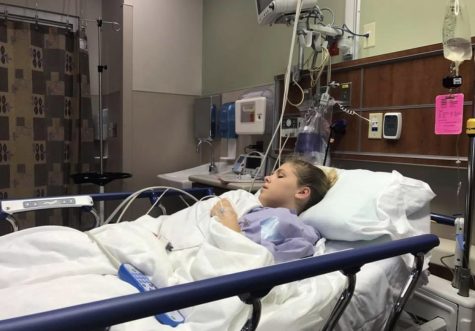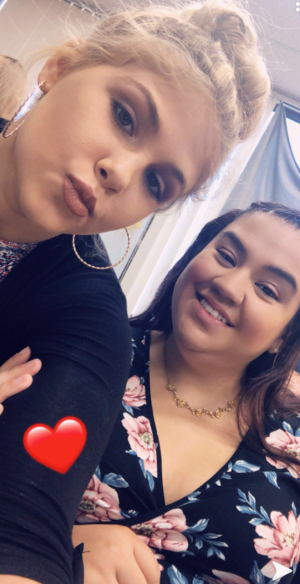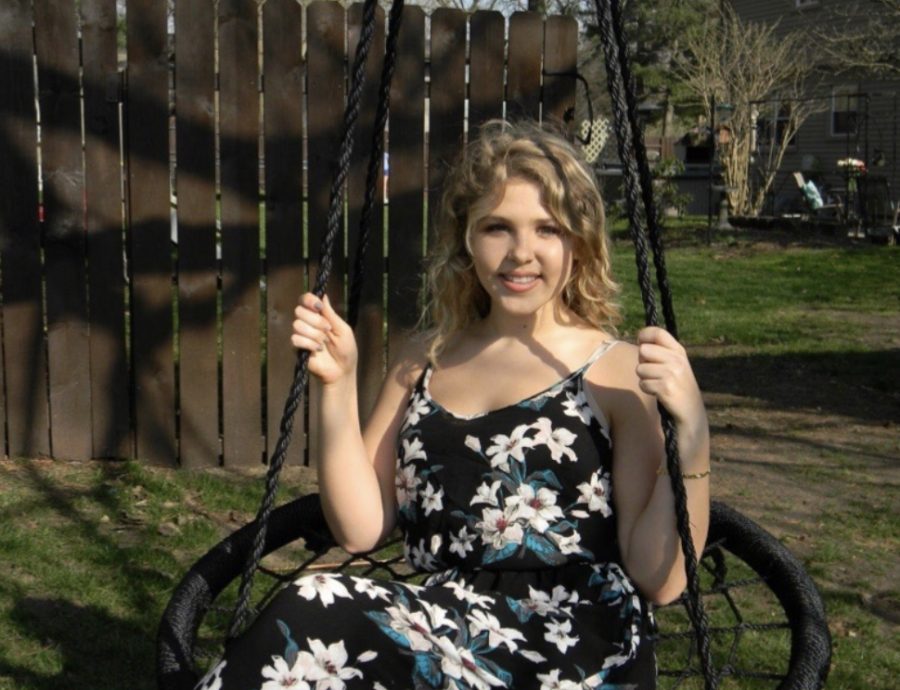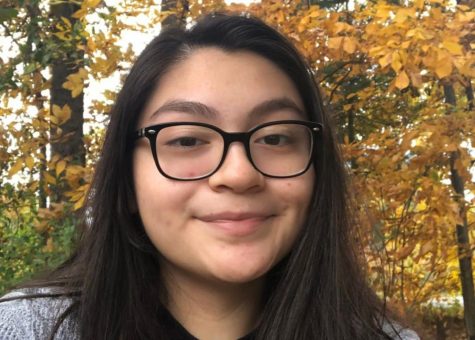Being hard of hearing in a hearing world
Junior Maddy Hankins was born with hearing loss and by middle school she was wearing hearing aids. Today, she is showing how her challenges have actually made her stronger.
Photo provided by Maddy Hankins
Maddy poses on a swing for a photo taken on April 19. Her hard of hearing started at birth, and since then she has had fourteen surgeries. She shared her inspiring story with GENESIS.
May 17, 2020
It was a normal day for junior Maddy Hankins last year when she was driving herself to cheerleading practice. As she drove, she looked around and saw cars coming to a quick halt. Police cars darted down the road and Maddy saw their lights, but she didn’t hear their sirens.
No signal or warnings, she was completely unaware of what was happening. In the blink of an eye, she found herself rear ended by a police car.
It was at that moment that Maddy realized the consequences of forgetting her hearing aids at home.
Surgery after surgery
One of the last things hearing people have to worry about is their ability to hear; for Maddy, it’s something she struggles with every day.
When Maddy was born, a hearing test was performed and the result came back that she had a small amount of hearing loss. Then, when Maddy was only a few month old, her family went on vacation to Mujeres, Mexico and surprisingly stayed there longer than expected.
“We went to visit the orphanage there, and my mom built a strong connection with the kids,” Maddy said. “They were really understaffed,” so my family decided to step in and we ended up staying there until I was four.”

There was a language barrier, and having hearing loss made the interactions challenging at times, but that didn’t stop Maddy. She made the most out of it and played with all of the kids.
In fourth grade, Maddy’s doctor decided that getting tubes in her ears and removing her adenoids was the best option due to her frequent ear infections. But later on, this resulted in more infections, and after that, her family knew she was hard of hearing. When it came time for middle school, Maddy got hearing aids.
Soon she found out that the canal of her ear did not develop fully. A fully developed canal is curved, meanwhile Maddy’s is straight which causes her to be more prone to ear infections. Her only option was to have precarious operations to reconstruct her whole ear canal. In total, she has had fourteen surgeries.
Because of the immense amount of scar tissue left on her ear drums, the probability of her hearing improving is very low. Specialists have told her that by the age of thirty, her hearing will be completely gone.

For the past three years, Maddy has been taking American Sign Language (ASL) courses via high school.
“My family has become very intrigued. I’ve taught them basic conversational signs,” said Hankins.
She has also invested a lot of time trying to interact and conversate with deaf people to get used to signing.
What’s the difference?
ASL is a complex language that is not as simple as learning signs with one’s hands. There are also body gestures, singing positioning, and facial expressions that make up the language. Some also may not realize that there is a distinct difference between ASL and English. The two differ in grammar as well as syntax rules. ASL sign has its own place in a sentence: if you change the order of a verb or adjective, the sentence would no longer make sense.
“ASL is a language developed by the deaf community. English is developed by the hearing community,” ASL teacher Larissa McFarland explained. “English is weighed down by unnecessary words and flourishes in speech in order to build an image in the mind. Whereas ASL is the image. No extra descriptive text needed.”
Additionally, the terms “hearing impaired” and “hard of hearing” are often confused when in reality, they are different.
To be “hearing impaired” implies that a person once had full hearing but that an incident caused their impairment. On the other hand, when a person is “hard of hearing,” it simply means that they can’t hear.
Challenges make her stronger
Unfortunately, because so many people in society have little or no experience with the Deaf community, they make assumptions about the abilities of those who are hard of hearing. These assumptions are often negative, but just because someone can’t hear doesn’t mean they can’t achieve the same things a hearing person can.

Usually, what happens to people with hearing loss is that they learn to deal with momentary lapses in clarity. And Maddy’s experience is no different. Being hard of hearing has caused many obstacles in her life.
“People look at me like I’m the same as everyone else because not everyone knows about my hearing loss,” Maddy said. “People get frustrated when I can’t hear them, so they tend to lose their patience with me. In cheer sometimes I can’t hear the last call (for the chants) or ‘set’ which means to come down from a stunt. So sometimes they get upset with me.”
Since transferring from Elkhart Central, Maddy has developed a strong relationship with McFarland.
“I first met Maddy in the second semester of last year. She came to class early. At first she did not tell me her hard of hearing story,” McFarland said. “I checked her IEP (Individualized Education Program) in case there were certain accommodations I had to make.”
McFarland adapts her classroom so that students with hearing loss have the same learning experience as other students.
“My teachers are always there for me, but I feel like sometimes they don’t understand me fully, but with Ms. McFarland, I feel like she truly knows how to relate to my problem and give me useful advice,” Maddy said.
Yes, there may be plenty of setbacks for people with hearing loss, but Maddy proves that her challenges have made her stronger.
“Because nobody understood what hearing loss was, I would get made fun of a lot,” Hankins said. “It really ruined my learning experience, and I became super behind in school.”
Though it left a huge impact on her, she has decided to become a Special Education teacher.
“I don’t want anyone to go through what I have been through,” Maddy said. “I want to be the someone I needed when I was younger.”








